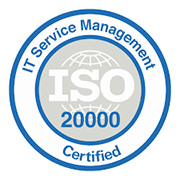Why environmental environmental management systems have become a key part of organizations? Reducing environmental impact is not only desirable, but an absolute necessity. And taking the right measures to do so, a legal obligation in many respects. Fortunately, there are environmental management systems effective. Solutions designed for those companies that wish to implement an efficient and effective sustainability strategy effective.
The importance of environmental management
Legislation with respect to environmental environmental management is becoming more and more ambitious. In recent years, in fact, the EU has adopted several directives aimed at companies’ activities. The objective: to ensure a environmental quality management by them, thus making them part of the solution rather than part of the problem.
This regulatory framework has forced companies to adapt quickly to the new criteria. And those who develop solutions for business managementto design a whole range of environmental environmental management systems to pave the way for large, medium and small companies.
All these environmental management systems have given rise to an ecosystem of technological responses without which it would be impossible to operate today in many ways, for example:
- To comprehensively manage environmental quality, safety and occupational health within the company.
- Effective environmental and waste management.
- Preparation of corporate environmental management plans.
But what iswhat is an environmental management system? exactly? We clear up some doubts.
Environmental management system. Definition
A environmental management system is a technological solution that helps companies achieve their sustainability goals. How? By means of software capable of recording, processing and analyzing data in order to measure the impact of corporate activity on its natural environment, and correct it through specific actions.
These systems are supported by a variety of environmental environmental management tools which in turn are integrated into the business ecosystem. Most incorporate Big Data and AI development in order to improve their efficiency and operability.
Examples of environmental management systems
Since environmental management is a multi-faceted aspect of business, there are a number of solutions for it. In fact, SAP’s products cover all of them. From the efficient management of the plastic tax with SAP to the eco-design of proposals for a circular economy.
Each of them ensures regulatory compliance y increases the company’s competitiveness in the market. These are just some of the objectives that any company can achieve thanks to the SAP solutions for sustainability:
- Calculate the complete carbon footprint of a product, service or the entire company, as well as life cycle analysis by taking into account all the variables involved (SAP Product Footprint Management).
- Produce regular, automated reports of real-time environmental data, such as greenhouse gas emissions, and launch of real-time environmental data, such as greenhouse gas emissions, and launch predictive models (SAP Sustainability Control Tower).
- Comply with environmental regulationsmanage health risks and ensure a safe working environment: emissions management, waste management, incident management, etc., from a holistic point of view (SAP S/4HANA for Environment, Health, and Safety).
- Contribute to the effective and real implementation of a circular economy within the company within the company through proposals for the eco-design of products, goods and processes (SAP Responsible Design and Production).
There are other proposals SAP in the area of sustainabilityThe company’s solutions are designed to improve sustainability, optimize the use of resources, reduce waste and increase energy efficiency. Solutions designed to improve sustainability, optimize the use of resources, reduce waste and increase energy efficiency.
Relying on these environmental management tools allows organizations to:
- Contribute to the company’s environmental, social and governance (ESG) objectives.
- Effectively decarbonize the value chain.
- Incorporate circularity into the culture of the company and all its activities.
- Develop environmental management measures aligned with the company’s objectives.
Other solutions within an environmental management plan
Companies use environmental management systems to obtain the desired results in this respect. However, there are other formulas that support such procedures:
- Implement in environmental management ISO 14001How? By identifying areas for improvement, defining goals, measuring environmental performance and implementing improvement plans for the environment. minimize impacts.
- Commitment to sustainable leadershipthat integrates the environmental value in all layers of the organization, strategies and daily tasks, making respect for the environment and people’s health a fundamental pillar of the company’s philosophy.
- Adopt industry-specific certifications and and partner with suppliers that comply with the same environmentally and socially responsible practices.
Among the benefits of implementing environmental management systems not only compliance with environmental norms and regulations, resource efficiency, reduction of operating costs, etc., but also two elements that are vital for the company’s survival: the first one is the compliance with environmental norms and regulations, the second one is resource efficiency. These are also two vital elements for the survival of the company:
- A commitment to sustainability that is aligned with the values and expectations of the public in the current decade, improving its reputation brand reputation and also its employer branding.
- The definitive commitment to solutions that promote innovation in products, processes and services, as well as development and research in favor of effective responses.
In short, it is a matter of placing organizations at the center of the demands not only of the market, but also of the public.








